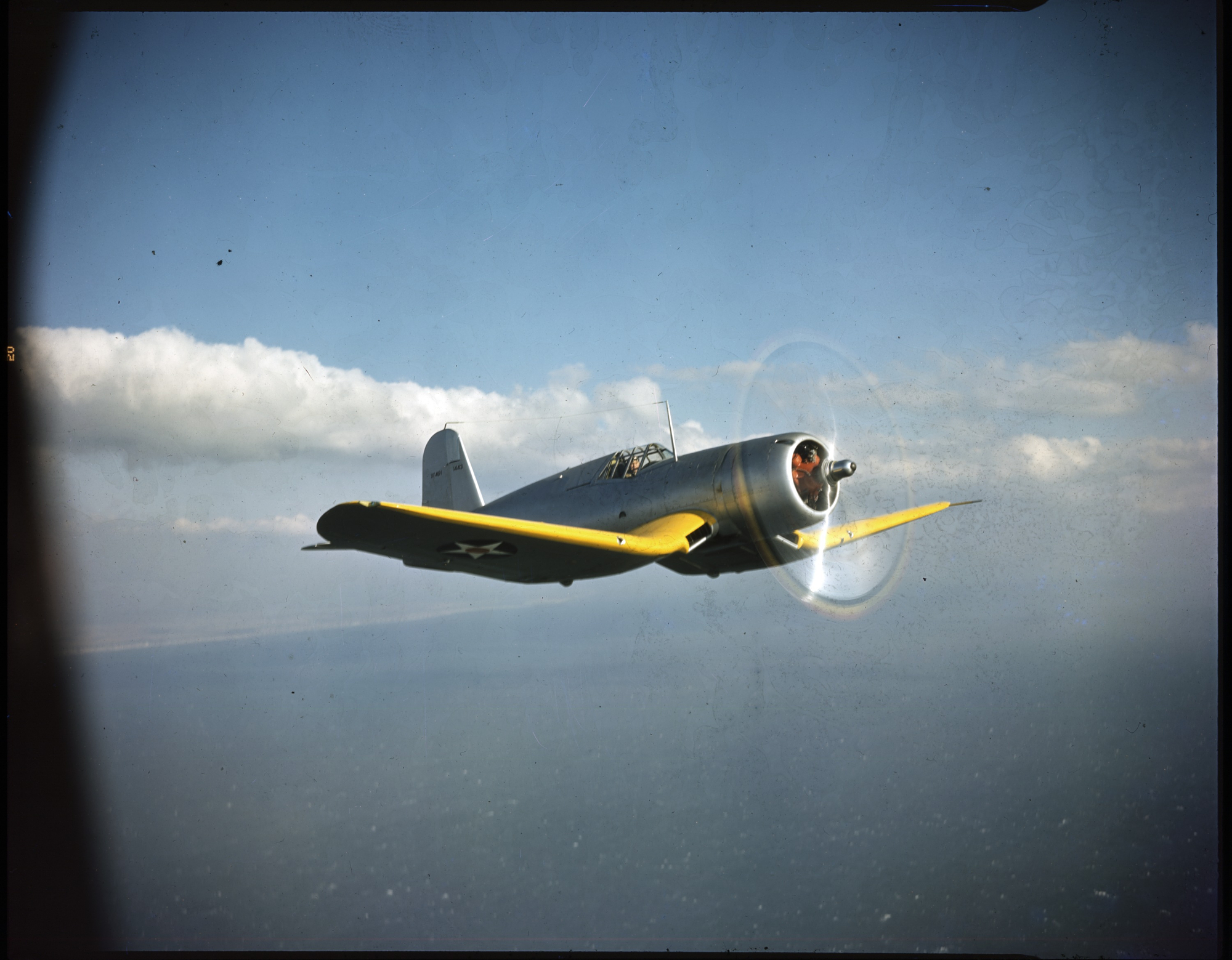

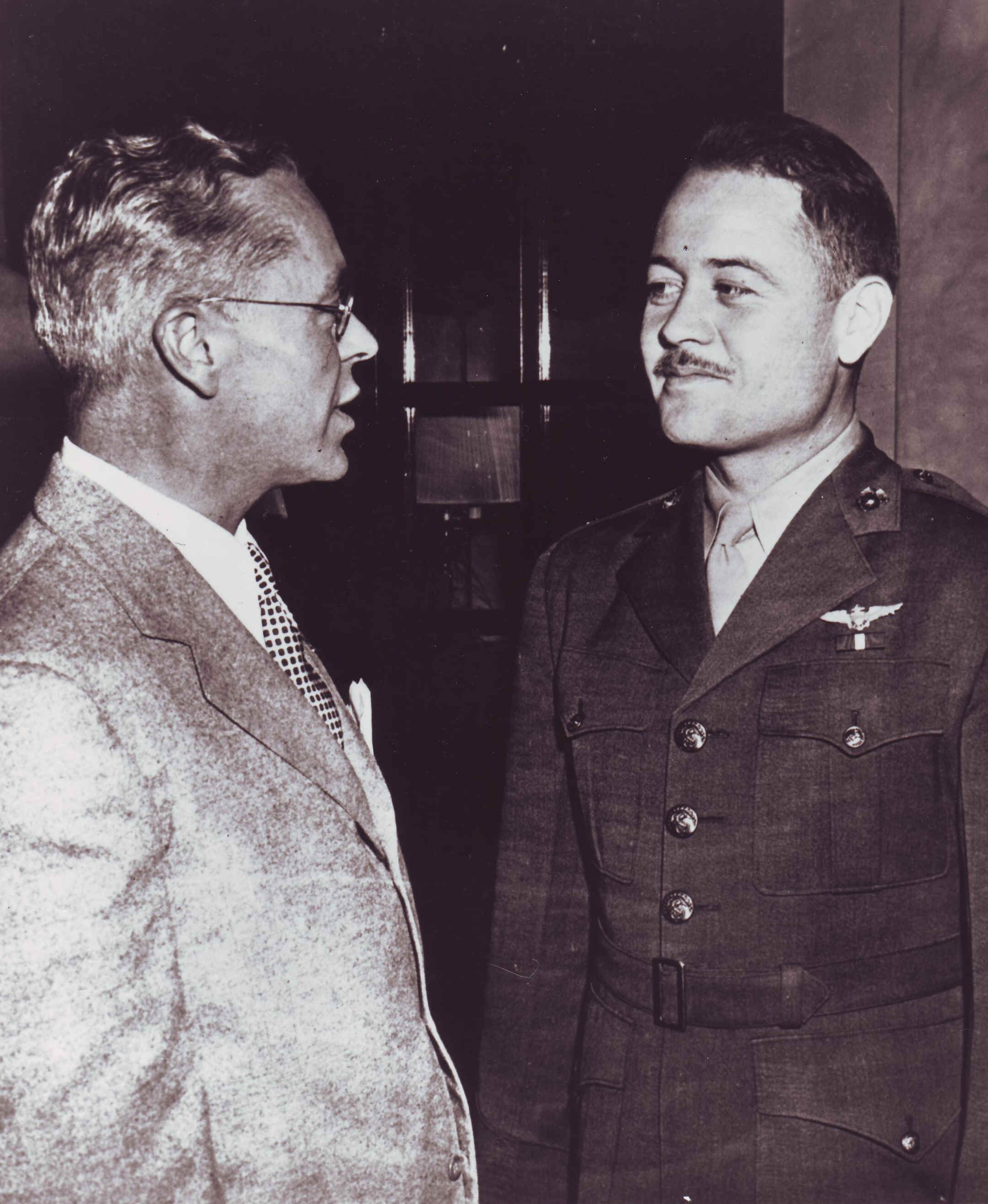
The F4U Corsair is a single-place, single-engine fighter, designed for operation from the U.S. Navy’s aircraft carriers. The XF4U-1 prototype was 30 feet (9.144 meters) long with a wing span of 41 feet (12.497 meters) and overall height of 15 feet, 7 inches (4.750 meters). It had an empty weight of 7,576 pounds (3,436 kilograms) and gross weight of 9,374 pounds (4,252 kilograms).
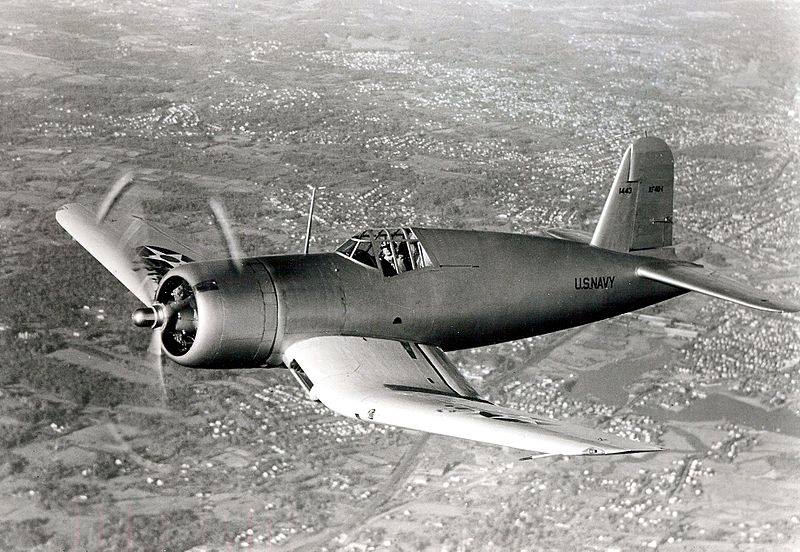

The size of the propeller was responsible for the Corsair’s most distinctive feature: the inverted gull wing. The width of the wing (chord) limited the length of the main landing gear struts. By placing the gear at the bend, the necessary propeller clearance was gained. The angle at which the wing met the fuselage was also aerodynamically cleaner.
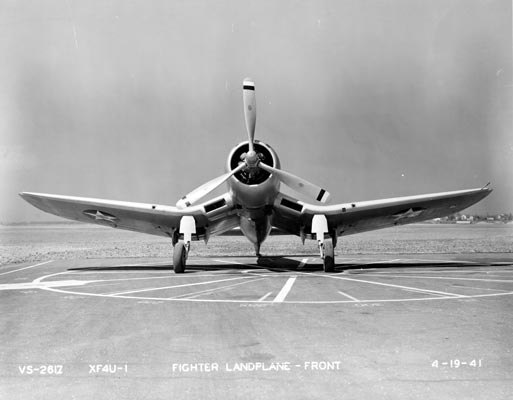
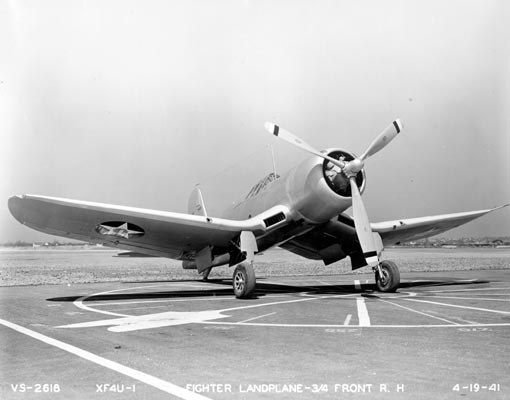
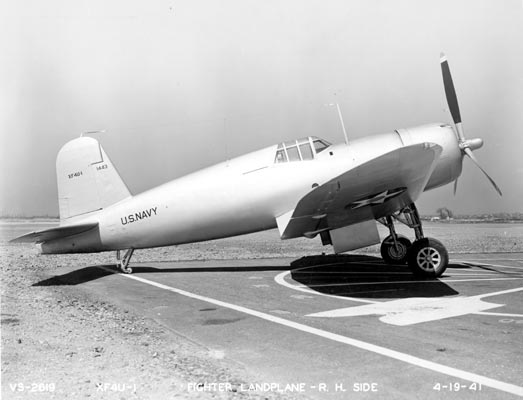
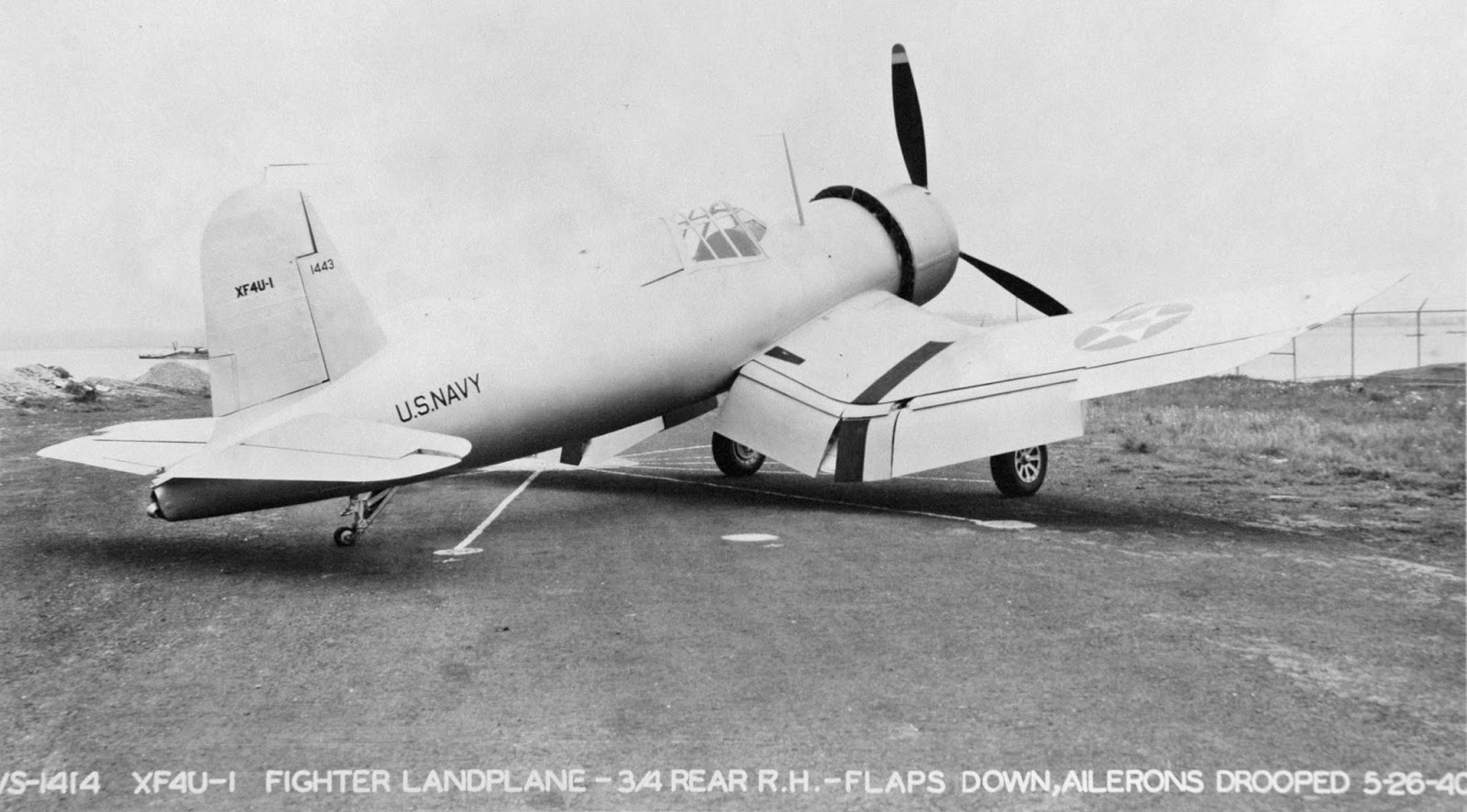
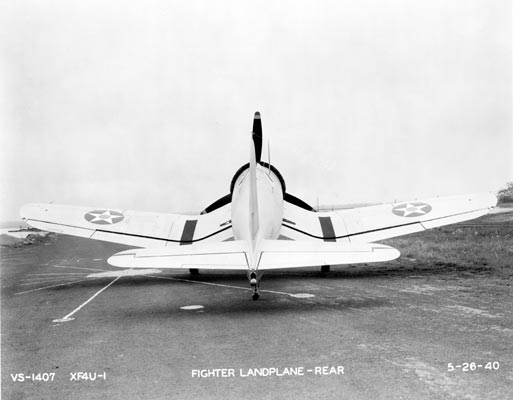
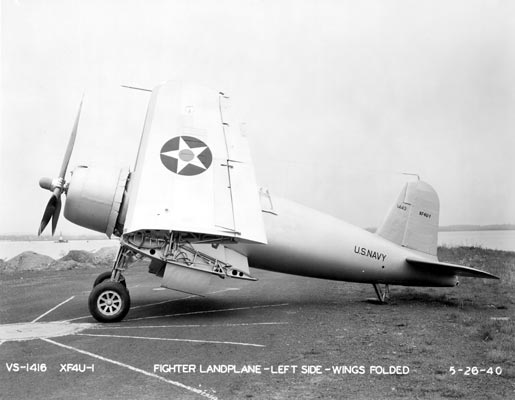
The XF4U-1 prototype had a maximum speed of 378 miles per hour (608 kilometers per hour) at 23,500 feet (7,163 meters). Although it has been widely reported that it was the first U.S. single-engine fighter to exceed 400 miles per hour (643.7 kilometers per hour) in level flight, this is actually not the case. During a flight between Stratford and Hartford, Connecticut, the prototype averaged a ground speed 405 miles per hour (652 kilometers per hour). This was not a record flight, and did not meet the requirements of any official speed record.
Several changes were made before the design was finalized for production. Fuel tanks were removed from the wings to make room for six Browning AN-M2 .50-caliber machine guns and ammunition. A new tank was placed in the fuselage ahead of the cockpit. This moved the cockpit rearward and lengthened the nose.
On 11 July 1940, the XF4U-1 was low on fuel. Rather than returning to Bridgeport, test pilot Boone Tarleton Guyton made a precautionary landing on a golf course at Norwich, Connecticut. The grass was wet from rain and the prototype ran into the surrounding trees. Guyton was not injured, but 1443 was seriously damaged. Vought-Sikorsky repaired it and it returned to flight testing about two months later.
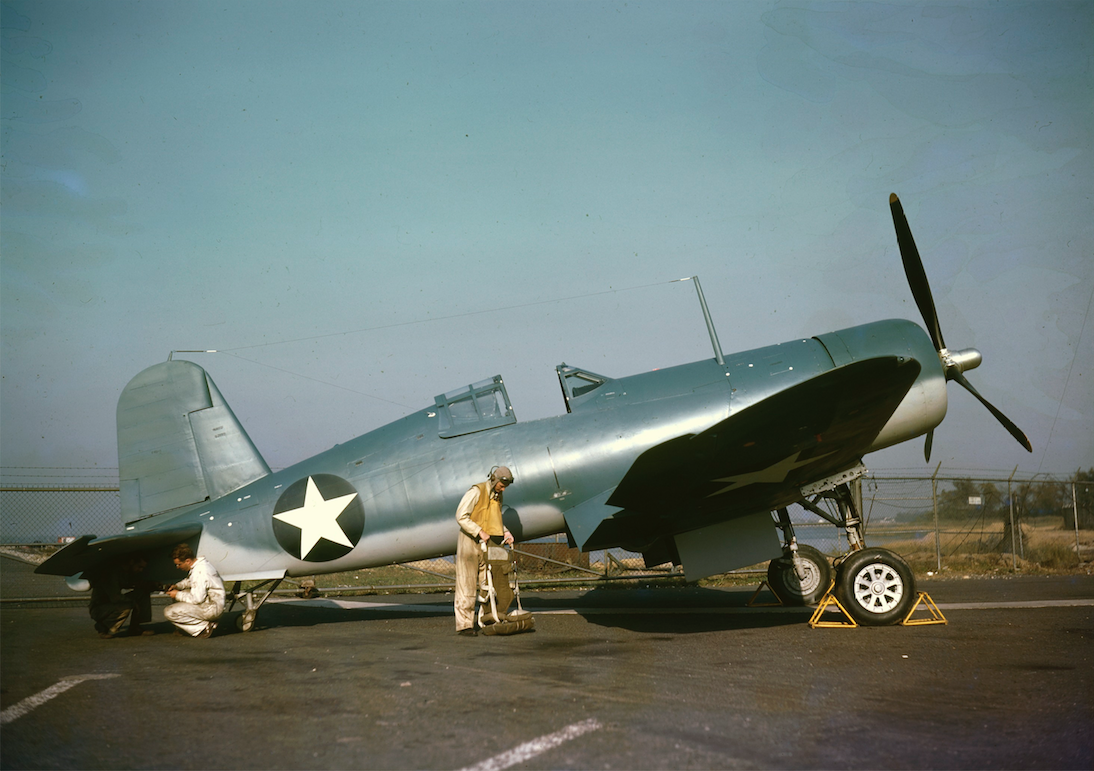
The production F4U-1 Corsair had a length of 33 feet, 4.125 inches (10.163 meters), wingspan of 40 feet, 11.726 inches (12.490 meters) and overall height (to top of propeller arc) of 15 feet, 0.21 inches (4.577 meters). The wing had 2° incidence at the root. The outer wing had a dihedral of 8.5°, and the leading edges were swept back 4°10′. With its wings folded, the width of the F4U-1 was 17 feet, 0.61 inches (5.197 meters), and gave it a maximum height of 16 feet, 2.3 inches (4.935 meters). When parked, the Corsair’s 13 foot, 4 inch (4.064 meter) propeller had 2 feet, 1.93 inches (65.862 centimeters) ground clearance, but with the fighter’s thrust line level, this decreased to just 9.1 inches (23.1 centimeters).
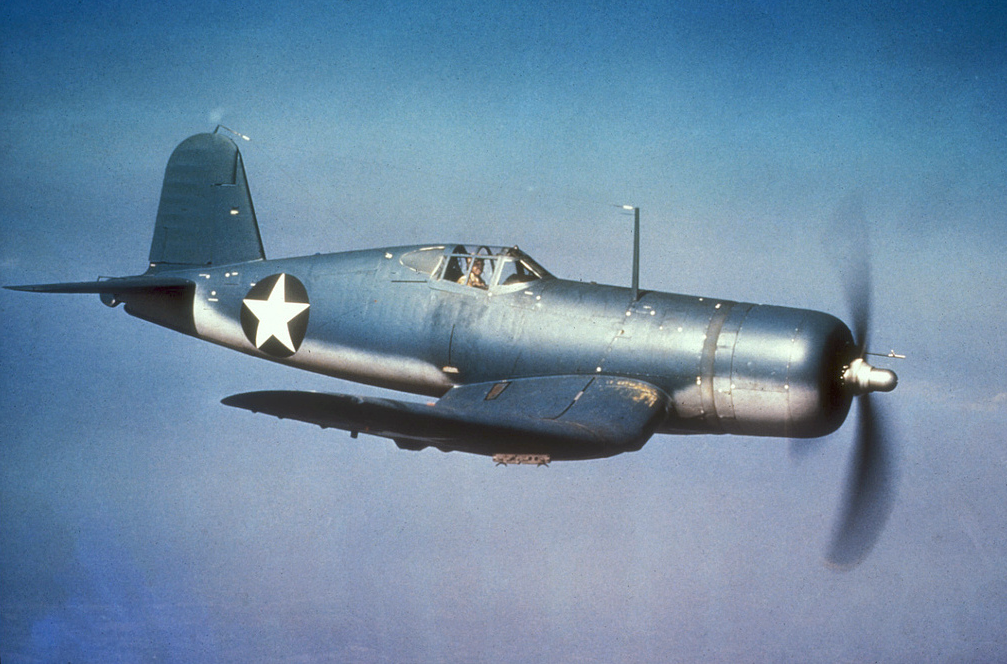
During fight testing of a production F4U-1 Corsair with a Pratt & Whitney R-2800-8 (Double Wasp SSB2-G) engine installed, armed with machine guns with 360 rounds of ammunition per gun, the fighter reached a maximum speed of 395 miles per hour (635.7 kilometers per hour) in level flight at 22,800 feet (6,949 meters), using Military Power. The service ceiling was 38,400 feet (11,704 meters).
A total of 12,571 Corsairs were manufactured the Vought-Sikorsky Aircraft Division (F4U-1), Goodyear Aircraft Corporation (FG-1D) and Brewster Aeronautical Corporation (F3A-1). The Corsair served the U.S. Navy and Marine Corps in World War II and the Korean War. Corsairs also served in other countries’ armed forces. Its last known use in combat was in Central America in 1969.
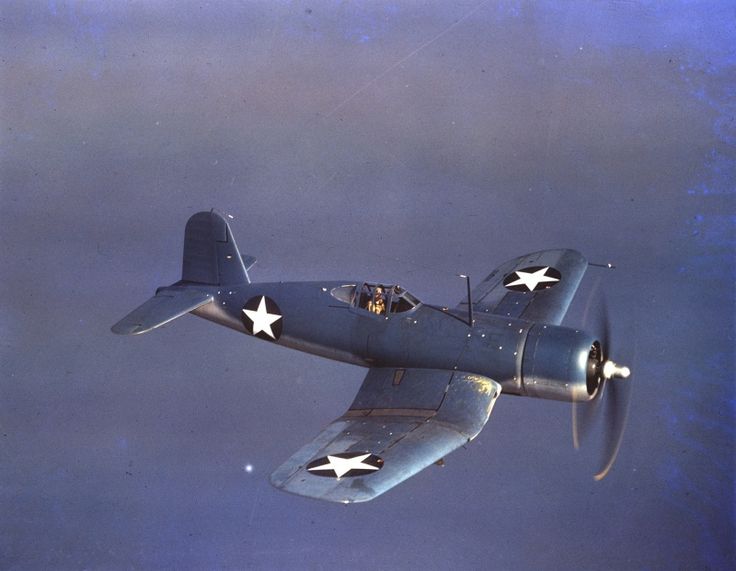
¹ corsair: noun, cor-sair. A pirate, or privateer (especially along the Barbary Coast of the Mediterranean Sea); a fast ship used for piracy.
© 2018, Bryan R. Swopes
The details here are true and helpful to me since I was always facinated with the F4U. I tuned radios on them in 1952, 53 aboard Kanehoe Bay MAS.
Excellent captures. Very good
Thanks
Used very successfully by the Royal Navy Fleet Air Arm, with a reduced wing-span.
I’ve always been impressed by the huge rudder on the F4U. I think it’s the only airplane who’s rudder is larger than rest of the vertical stabilizer.